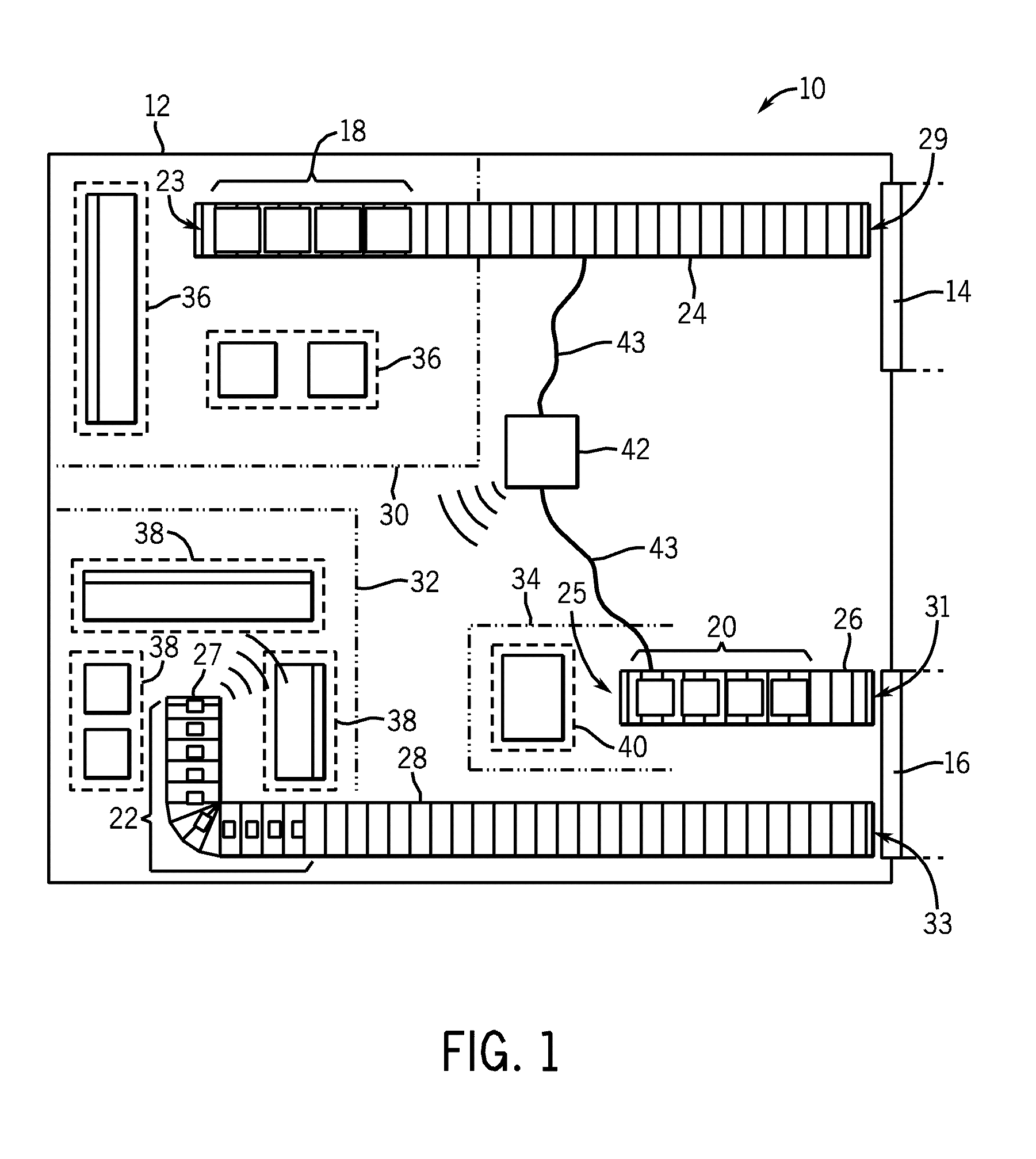Welding inventory tracking, storing, and distribution system
a technology for inventory tracking and welding consumables, applied in the field of welding consumable inventory tracking and distribution system, can solve the problems of manufacturing inadvertently over- or under-ordering new shipments of consumables, unaccounted for or stolen welding consumable deliveries, and unnecessary labor
- Summary
- Abstract
- Description
- Claims
- Application Information
AI Technical Summary
Problems solved by technology
Method used
Image
Examples
Embodiment Construction
[0025]As one skilled in the art will fully appreciate, the following description of welding consumables, welding accessories, and welding systems applies equally to the constituents of other high power output systems, such as heating and cutting systems, that utilize similar consumable materials. One of ordinary skill in the art will appreciate that reference to welding wire, shielding gas, flux, welding consumables, welding-type consumables, welders, or welding generally, includes the similar or corresponding concepts and materials of welding, cutting, or heating systems. Thus, description of the consumables, accessories, and other inventory for a welding apparatus illustrates just one environment in which the present invention may be implemented.
[0026]Broadly, a preferred embodiment of the present invention relates to a system for storing and conveying inventory of welding-type consumables to welding work zones within a manufacturing facility or similar environment. The consumable...
PUM
 Login to View More
Login to View More Abstract
Description
Claims
Application Information
 Login to View More
Login to View More - R&D
- Intellectual Property
- Life Sciences
- Materials
- Tech Scout
- Unparalleled Data Quality
- Higher Quality Content
- 60% Fewer Hallucinations
Browse by: Latest US Patents, China's latest patents, Technical Efficacy Thesaurus, Application Domain, Technology Topic, Popular Technical Reports.
© 2025 PatSnap. All rights reserved.Legal|Privacy policy|Modern Slavery Act Transparency Statement|Sitemap|About US| Contact US: help@patsnap.com



